Craft punches and button makers, two staples in the crafting world, often stir up questions among DIY enthusiasts.
Can you use craft punches with a button maker? It’s a question I’ve been asked more times than I can count! So, let’s dive right into it.
First off, it’s essential to understand what these tools are. Craft punches are handy gadgets that cut out shapes from various materials – think paper or cardstock.
They’re pretty versatile and come in all sorts of designs, from simple circles to intricate flowers and everything in between.
Button makers allow you to create custom buttons by pressing your chosen design into a metal shell.
Returning to our initial question: Do craft punches work for button makers? The answer is yes…and no. It largely depends on the size and design of both your punch and button maker. Let me explain further.
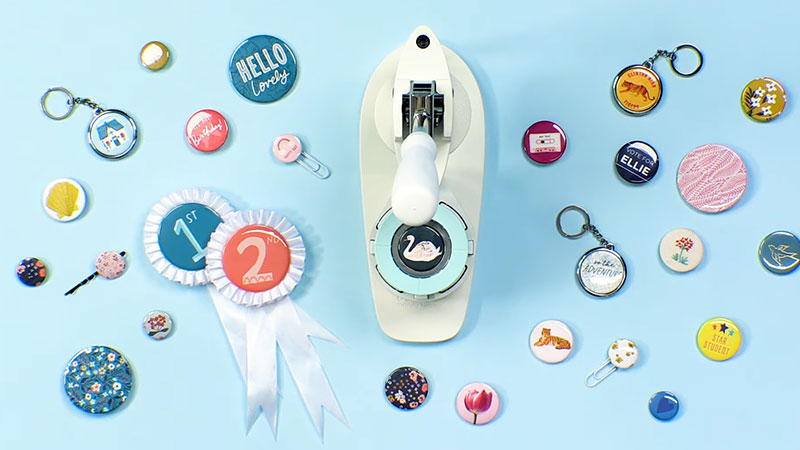
What are Craft Punches?
Craft punches, also known as paper punches or scrapbook punches, are handheld devices used to cut specific shapes from various materials.
They come in different sizes and designs, from simple circles to intricate shapes like flowers and butterflies.
Craft punches are easy to use: insert the material and press down on the lever. While traditionally used for paper crafting, modern craft punch models can handle materials like plastic sheets, foam core boards, and lightweight metal foils.
They are favored by DIY enthusiasts, teachers for classroom activities, event planners for custom decor, and graphic designers for adding tangible elements to their work. Craft punches are versatile tools suitable for both beginners and seasoned crafters.
How do Craft Punches Work?
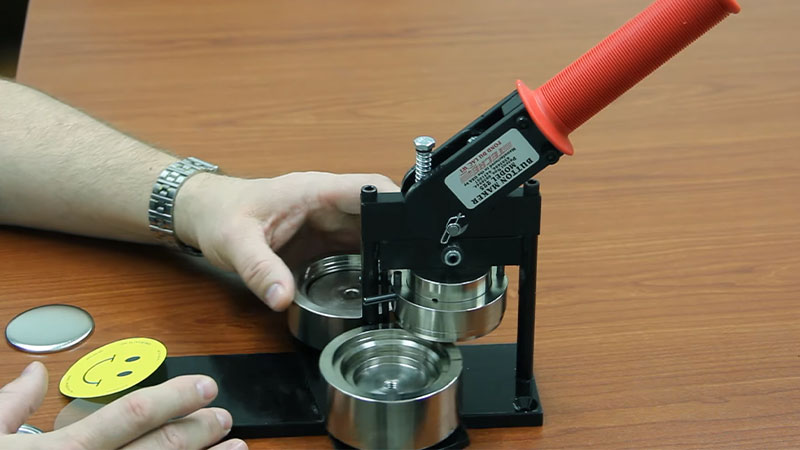
Craft punches utilize a simple yet effective mechanism to create intricate designs in materials such as paper, thin plastic, or fabric.
Here’s a breakdown of how they function:
Selection of Material and Design
The first step involves choosing the material you want to work with and the design you wish to create. Craft punches come in various shapes and sizes, offering diverse creative options.
Positioning the Material
Once you select your material and design, place the material inside the punch. Most craft punches feature an open slot at the bottom where you can easily slide your chosen medium in.
Pressing Down
The next step is to press down on the top of the craft punch. This action activates a sharp metal die or blade within the device.
Cutting Mechanism
When you press down on the punch, the sharp metal die cuts through the material, creating a precise cut-out based on the shape of the die. This mechanism ensures clean and accurate cuts, allowing for intricate designs with ease.
Additional Features
While the primary function of craft punches remains consistent, different models may offer additional features to enhance usability and versatility.
These features can include rotating dies for switching between shapes, a locking mechanism to keep the punch closed when not in use, and a cushioned grip for comfort during extended crafting sessions.
Can Craft Punches Be Used for Making Buttons?
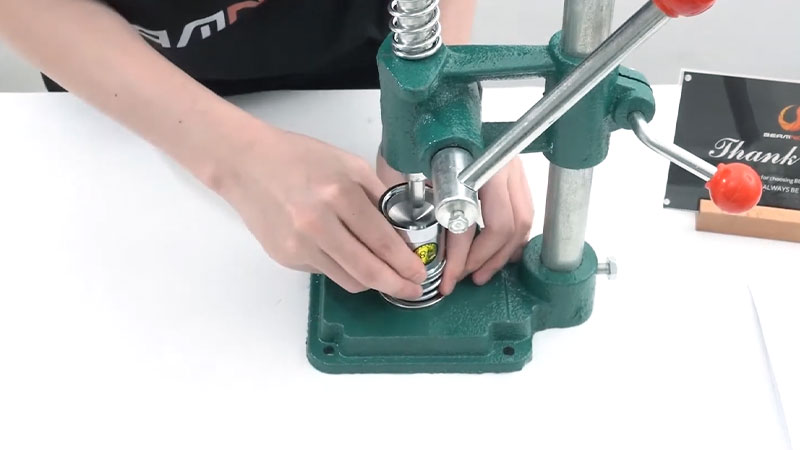
Yes, craft punches can be used for making buttons, but it depends on the type of craft punch and the material you intend to use for your buttons. Regular craft punches are best suited for fabric or thin materials like felt or foam sheets.
However, they may wear down faster if used with thicker materials. On the other hand, heavy-duty craft punches can handle more brutal substances such as leather or thin metal sheets, making them suitable for button-making with these materials.
While craft punches offer versatility and potential for button making, choosing the right type of punch for your specific material and proceeding cautiously is essential to ensure optimal results.
Pros of Using Craft Punches for Button Making
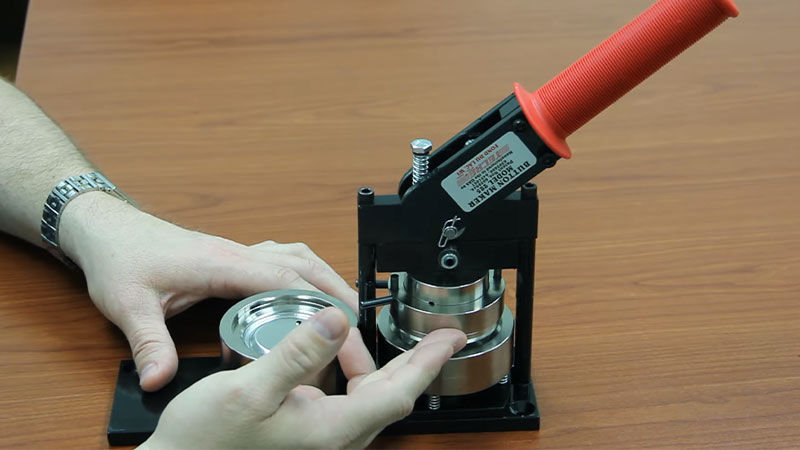
Using craft punches for button-making offers several advantages that make them a preferred tool for many crafters:
Efficiency
Craft punches are highly efficient, especially when making buttons in bulk. They quickly and precisely cut out shapes from materials like paper or thin plastic sheets, saving time compared to manual cutting methods.
Consistency
Craft punches provide consistent size and shape to the buttons, which is crucial for a professional look, especially if you’re selling them.
Craft punches, unlike cutting with scissors or hobby knives, which may result in variations, ensure uniformity across all your buttons.
Versatility
Craft punches come in various shapes and sizes, allowing for different design options. Whether you want classic round buttons, badges with sharp edges, or custom shapes like hearts or stars, there’s a craft punch available to suit your needs.
Some craft punches come with patterned designs, adding further versatility to your button-making endeavors.
Cost-effectiveness
While high-end craft punches are available, many budget-friendly options on the market are still highly effective for button making.
This makes craft punches accessible to hobbyists and small-scale producers without breaking the bank.
Cons of Using Craft Punches for Button Making
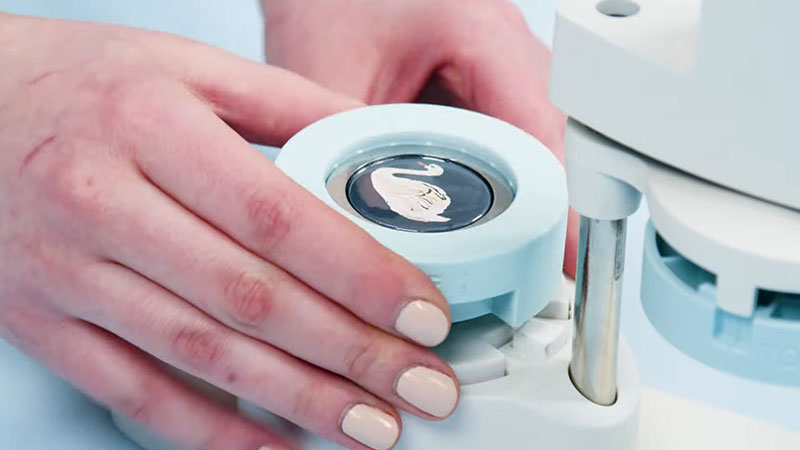
Using craft punches for button making has its drawbacks, which can impact the efficiency and quality of your projects:
Precision
Craft punches may lack precision, especially regarding centering designs on buttons. The speed at which they operate can sometimes compromise accuracy, resulting in buttons with uneven or off-center designs, detracting from their professional appearance.
Durability
Craft punches are typically made from plastic and metal components that can wear down over time, especially with frequent use.
This can lead to issues such as dull blades or jamming, requiring replacements before completing projects, which can be inconvenient and add to costs.
Limited material compatibility
Craft punches are designed primarily with thin materials like paper or lightweight cardstock. Thicker materials such as fabric or heavy-duty cardboard may cause the punch to jam or break, limiting the range of materials you can use for button making.
Size restrictions
Craft punches come in specific sizes, limiting creativity and variety in button sizes. If you require buttons of non-standard sizes, you may need to invest in multiple craft punches or explore alternative methods of button-making.
Cost-effectiveness over time
While craft punches may be initially affordable, the need for frequent replacements due to wear and tear can make them less economical in the long run, especially for those engaging in the mass production of buttons.
Conclusion
So, do craft punches work for button makers? I’ve delved deep into this topic, and the answer is a resounding yes. Craft punches can indeed be a valuable tool in the arsenal of any creative button maker.
Firstly, it’s important to highlight how versatile these tools are. Craft punches come in all shapes and sizes, from hearts to stars, flowers to squares.
This variety makes them an invaluable asset when you’re looking to create unique buttons with different designs.
But it’s not just about variety. The precision that comes with using craft punches is second to none. You’ll get clean-cut edges every time, which can significantly enhance the professional look of your buttons.
Moreover, let’s not forget about speed and efficiency. Punching out uniform shapes quickly means you’ll spend less time prepping and more time creating beautiful buttons.
However, bear in mind there may still be some limitations depending on the specifics of your project or the materials used:
- A heavy-duty punch might be necessary for thicker materials like fabric or dense cardstock.
- Some intricate designs might not punch cleanly without additional effort or tools.
- Not all craft punch designs may align perfectly with your button maker sizing requirements.
Despite these considerations, I firmly believe integrating craft punches into your button-making process can bring real value – enhancing creativity while maintaining quality and efficiency.
In my experience as a blogger sharing crafting tips and tricks over the years, I’ve seen firsthand how such simple tools can transform projects in unexpected ways. So go ahead give craft punches a try in your next button-making endeavor!
Leave a Reply